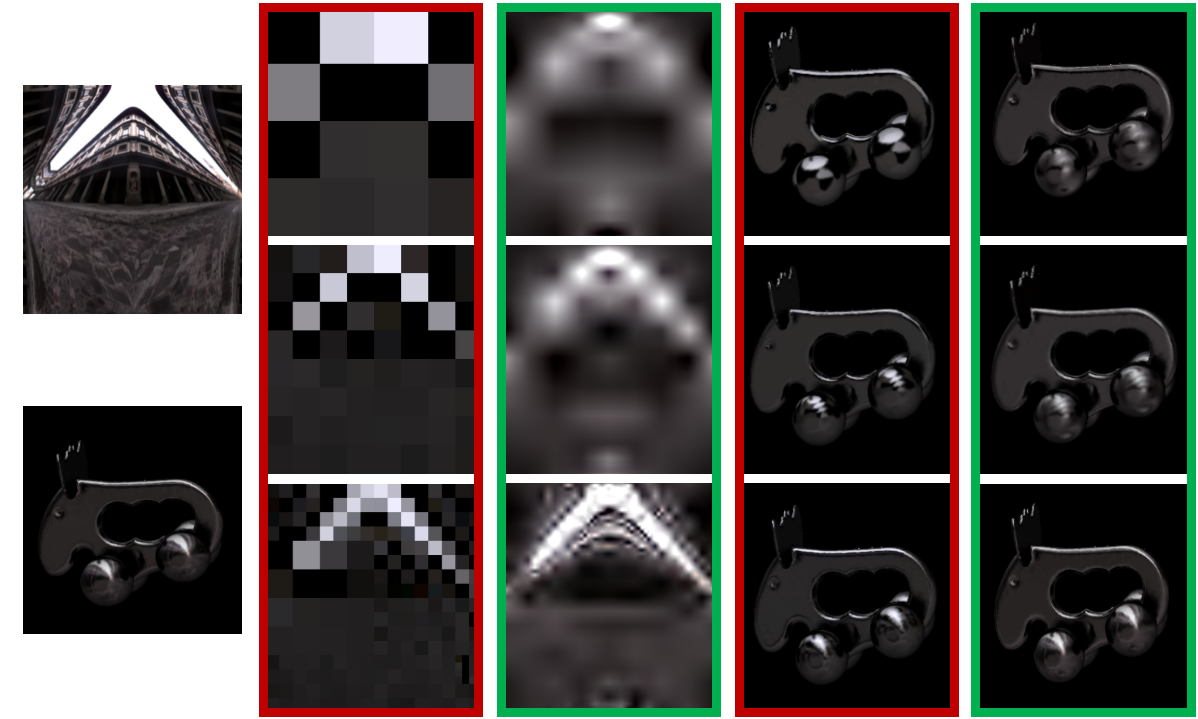High-order Wavelets for Hierarchical Refinement in Inverse Rendering
Nick Michiels 1 Jeroen Put 1 Tom Haber 1 Martin Klaudiny 2 Philippe Bekaert 1
|
1 Hasselt University - tUL - iMinds Expertise Centre for Digital Media Wetenschapspark 2, 3590 Diepenbeek, Belgium http://edm.uhasselt.be |
2 Centre for Vision, Speech and Signal Processing, University of Surrey, UK http://www.surrey.ac.uk/cvssp/ |
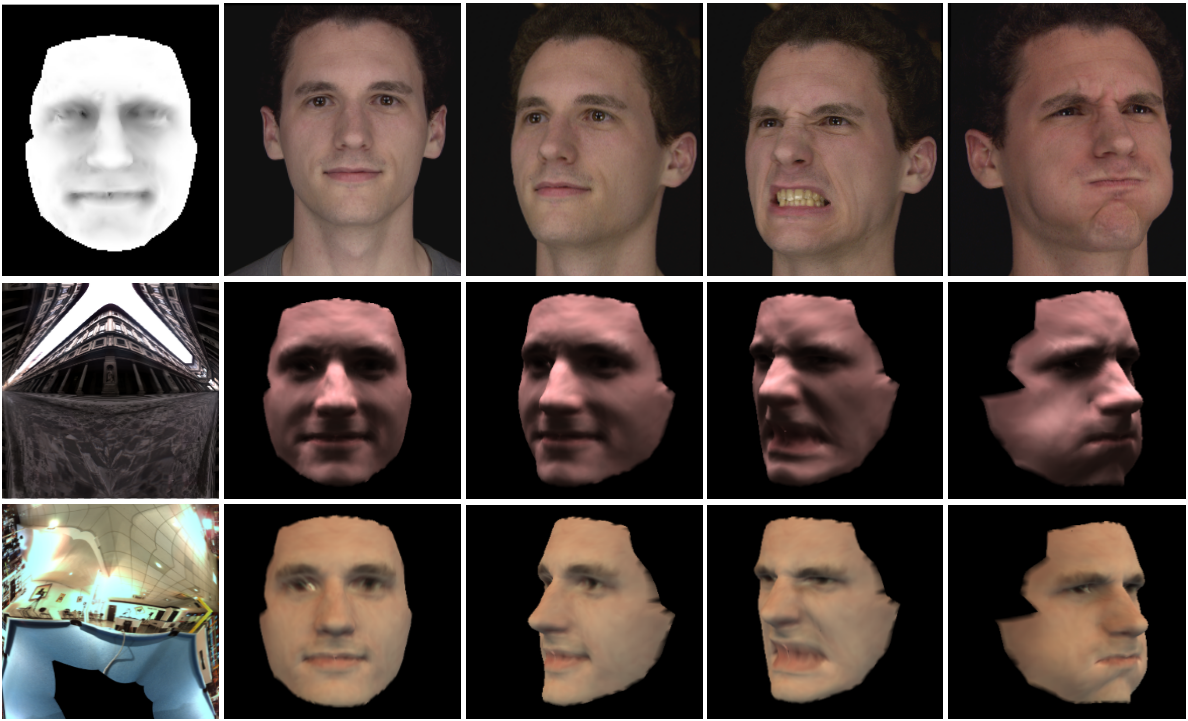
Abstract
It is common to use factored representation of visibility, lighting and BRDF in inverse rendering. Current techniques use Haar wavelets to calculate these triple product integrals efficiently [Ng et al. 2004]. Haar wavelets are an ideal basis for the piecewise constant visibility function, but suboptimal for the smoother lighting
and material functions. How can we leverage compact high-order wavelet bases to improve efficiency, memory consumption and accuracy of an inverse rendering algorithm? If triple product integrals can be efficiently calculated for higher-order wavelets, the reduction in coefficients will reduce the number of calculations, therefore improving performance and memory usage. Some BRDFs can be stored 5x more compactly.
Current inverse rendering algorithms rely on solving large systems of bilinear equations [Haber et al. 2009]. We propose a hierarchical refinement algorithm that exploits the tree structure of the wavelet basis. By only splitting at interesting nodes in the hierarchy, large portions of less important coefficients can be skipped. The key of this algorithm is only splitting nodes of the wavelet tree that contribute to the solution of the system M (see Algorithm 1). It is critical to use high-order wavelets for this, as Haar wavelet can only introduce high frequencies which leads to blockiness.
Images
Paper and Video
The videos can be watched in VLC media player
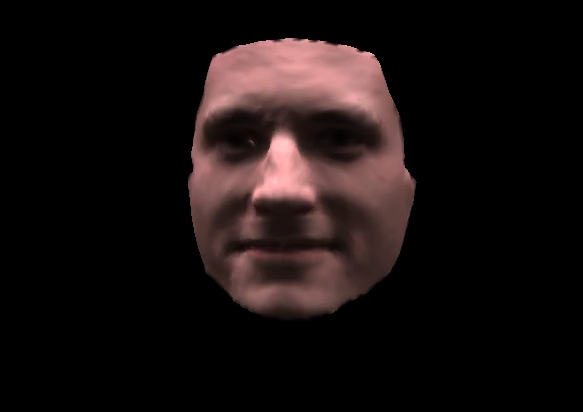 |
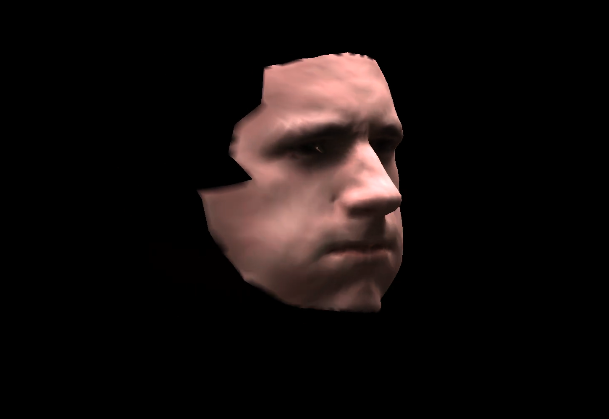 |
|
surreyFaceUffiziFrame18_slow.avi (1,0 MB) |
surreyVideoUffiziHighRes.avi (2.6 MB) |
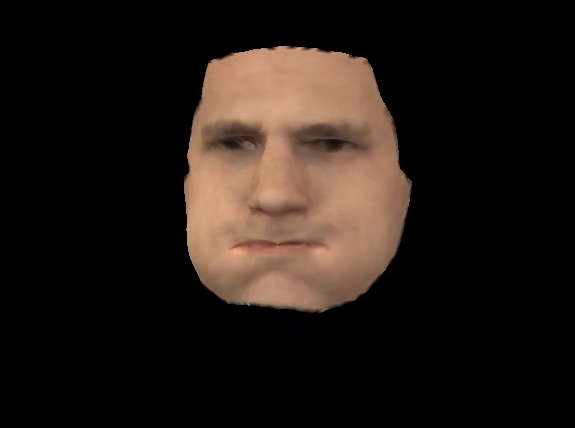 |
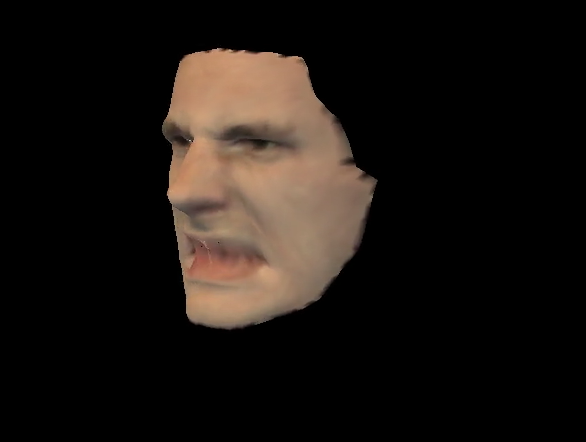 |
|
surreyFacePool6Frame190.avi (1,1 MB) |
surreyFaceVideoPool6.avi (0,9 MB) |
References
HABER, T., FUCHS, C., BEKAERT, P., SEIDEL, H.-P., GOESELE, M., AND LENSCH, H. P. A. 2009. Relighting objects from image collections.
NG, R., RAMAMOORTHI, R., AND HANRAHAN, P. 2004. Triple product wavelet integrals for all-frequency relighting. ACM Trans. Graph. 23, 3 (Aug.), 477–487.
PEERS, P., AND DUTR´E , P. 2005. Inferring reflectance functions from wavelet noise. In Proceedings of the Sixteenth Eurographics conference on Rendering Techniques, Eurographics Association, Aire-la-Ville, Switzerland, Switzerland, EGSR’05, 173– 182.
